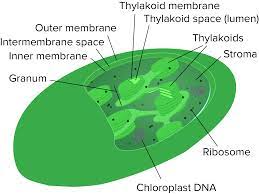Thylakoid Membranes : Study

Researchers at the University of Liège, Belgium have identified thylakoid microstructures in fossil cells that are 1.75 billion years old.
- Thylakoids are little pouches located in the chloroplasts of plants.
- They store chlorophyll, the substance in plants that reacts to sunlight and triggers photosynthesis.
- These membranes are dense, mostly galactolipid, protein-containing bilayers in which photosynthesis occurs in photosynthetic organisms.
- They are found in ancient, light-sensitive bacteria called cyanobacteria.
- The cyanobacteria multiplied in the oceans billions of years ago, and are believed to be responsible for the vast stores of oxygen that are found in the atmosphere and thus, a precursor to life.
- It is now believed that thylakoid membranes in cyanobacteria were what made them capable of using sunlight to create energy and release oxygen.
Cyanobacteria:
- These are also called blue-green algae, microscopic organisms found naturally in all types of water.
- These single-celled organisms live in fresh, brackish and marine water.
- These organisms use sunlight to make their own food.




